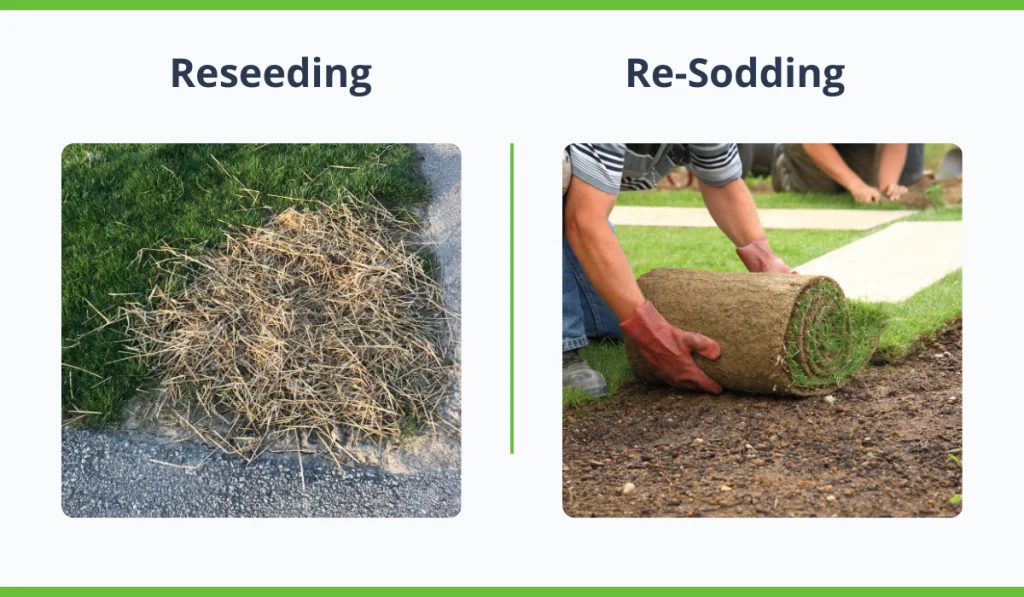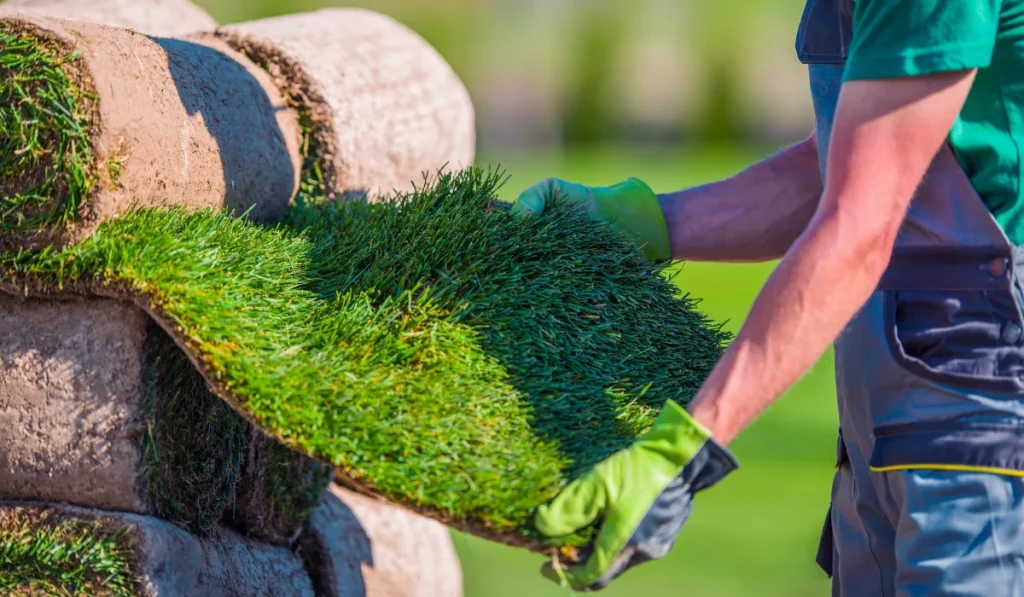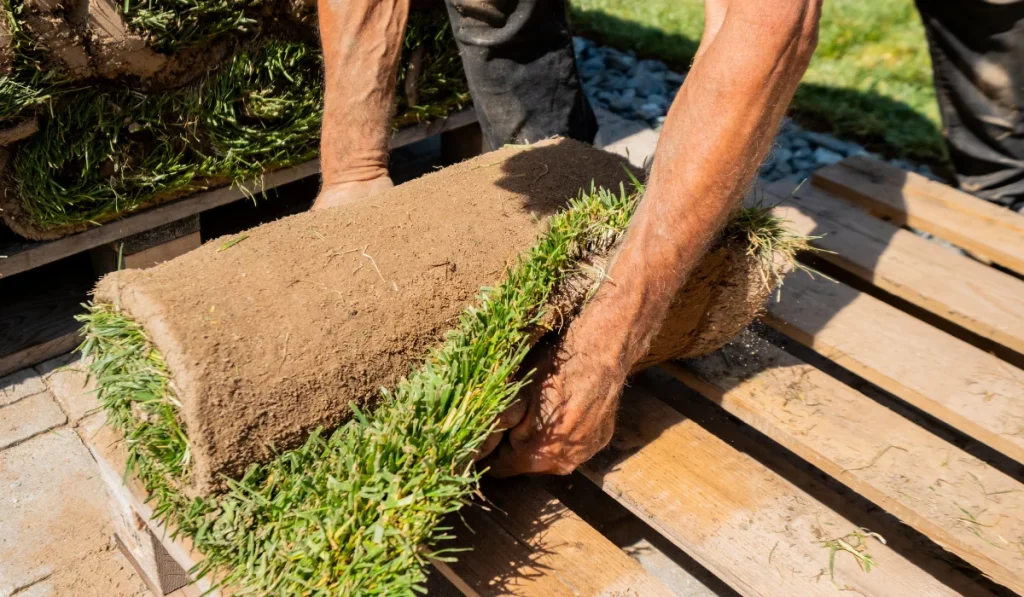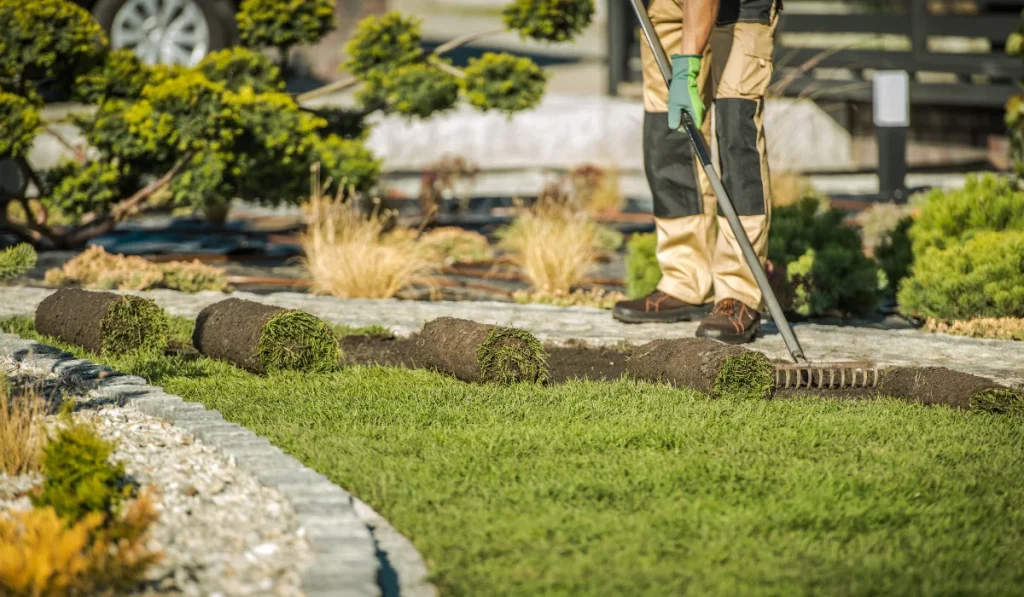Noticing your lawn looking a bit sparse? You might be debating whether to reseed or resod.
Reseeding plants new grass seeds directly into the soil, filling bare spots and thickening your lawn. Meanwhile, resodding offers a quick fix with pre-grown grass rolls for an instant lush lawn.
Each method has its pros and cons, so weigh your options for a lush, vibrant lawn that suits your patience and budget. Keep reading to discover which method is best for you.
Key Takeaways
- Reseeding your lawn involves planting grass seeds to fill bare or thin spots, enhancing the lawn’s density and appearance over time.
- Re-sodding means laying down pre-grown turfgrass sections for an immediate, mature lawn look, ideal for severely damaged lawns.
- Before choosing between reseeding or re-sodding, assess your lawn’s health, considering soil quality, grass vitality, and usage.
- The best time to reseed depends on grass type and season, with early fall generally optimal for cool-season grasses.
- The right time to re-sod is when your lawn shows a significant decline, such as large patchy areas or damage from pests.
Reseeding vs. Re-Sodding: The Basics

Choosing between reseeding and re-sodding depends on the condition of your lawn and how quickly you want results. So, getting to know their basics is essential to help you decide.
What is Reseeding?
Reseeding a lawn involves planting grass seed directly into the soil to fill bare or thin areas. It’s an effective method to improve the density and appearance of your lawn.
Garden tools such as a lawn spreader, rake, and sometimes aeration equipment are generally necessary for successful reseeding. To reseed, here’s what you need to do:
- Remove debris and any dead grass.
- Loosen the topsoil with a rake.
- Use a spreader to distribute new seeds evenly.
- Lightly rake the area to cover the seeds with a thin soil layer.
- Water gently and keep the area moist until the seeds germinate and sprout.
What is Re-Sodding?
Re-sodding is the process of laying new sod, which are pre-grown turfgrass sections, on an entire lawn. It’s suitable for extensive damage to existing lawns where reseeding would be ineffective.
Essential supplies for re-sodding include sod rolls or sections, a sharp knife for trimming, and a lawn roller to ensure good sod-to-soil contact.
Here are the steps for re-sodding with instant results:
- Use a sod cutter to prep the area by removing old grass and weeds.
- Till the soil and level the lawn area.
- Enhance soil with compost if needed.
- Lay sod strips tightly together, staggering the seams.
- Trim edges for a neat finish.
- Press sod down with a lawn roller.
- Water thoroughly with an irrigation system, and refrain from hand-watering or using an oscillating sprinkler.
- Continue with regular watering until the root system is established.
How to Assess Your Lawn’s Condition
Before deciding on reseeding or resodding, you must accurately evaluate your lawn’s health. As homeowners, accurately assessing key indicators can save time and ensure the right lawn care approach.
Here are the key factors to keep an eye on when assessing your lawn condition for restoration:
- Soil Quality: Soil test results can reveal nutrient deficiencies or pH imbalances.
- Grass Vitality: A healthy lawn should not have excessive bare soil or patches of dead grass.
- Lawn Usage: High foot traffic in landscaping can damage any type of grass and compact soil.
With these indicators, here are the signs of an unhealthy lawn and the potential lawn diseases causing them:
| Signs | Possible Lawn Diseases |
| Thinning grass | Not enough sun |
| Yellow patches with ring | Fusarium Blight, Iron Chlorosis |
| White, tan, or brown spots | Brown Patch, Snow Mold |
| Bare spots | Grubs, Animal Digging |
| Mushrooms | Overwatering, Organic Matter Decay |
When to Reseed Your Lawn
Knowing when to reseed your lawn is crucial for maintaining its lushness and health. So, proper timing and recognizing the need for new grass can make all the difference in germination and growth.
Before considering reseeding, carefully examine your lawn for signs that it needs fresh grass seeds.
Here are indicators that suggest it’s time to add new grass seed to your lawn:
- Bare Patches: Areas without grass or with very thin grass coverage.
- High Traffic Damage: Pathways are worn from walking or playing on the grass.
- Disease Presence: Discoloration or dead spots that indicate lawn disease.
- Aging Lawn: Older lawns might need rejuvenation as grass productivity declines with age.
Understanding a seeded lawn’s ideal climate and soil conditions is crucial for successful reseeding during the growing season.
Here’s a close look at ideal seasonal timings for different types of grass, like bluegrass and Bermuda grass:
| Seasons | Cool-Season Grass | Warm-Season Grass |
| Early Spring | Aerate and amend | Not advisable |
| Early Fall | Best time | Prepare for next season |
| Late Fall | Overseed existing grass | Not advisable |
When to Re-Sod Your Lawn
Choosing to re-sod an existing lawn is a considerable investment in time and resources, but it can instantly transform the appearance of your yard.
Understanding the right time to re-sod involves recognizing signs of lawn distress and assessing the most beneficial circumstances for undertaking this labor-intensive task.
Signs That Your Lawn Needs Re-Sodding
It’s crucial to look for clear signs of decline before attempting to re-sod, as this prevents unnecessary work and ensures that the new sod has the best chance to thrive.
Here are the significant indicators that suggest re-sodding may be necessary:
- Patchy Grass: Large areas with no grass or with dead grass that fail to respond to watering or fertilization.
- Persistent Pests: Infestations that have caused widespread damage and are beyond control through typical means.
- Disease: Symptoms such as brown patches, slimy areas, or discolored spots that don’t improve with treatment.
- Severe Damage: Grass areas damaged by chemicals, fire, or extensive use that cannot be recovered.
In certain situations, re-sodding can be more effective and efficient than reseeding. These ideal scenarios ensure that the results of a new lawn justify the effort and cost.
| Scenarios | Explanation |
| Instant Lawn Transformation | If immediate results are necessary, re-sodding provides a complete lawn almost overnight. This is perfect for events or selling a home. |
| High Traffic Tolerance | Commercial areas or homes with kids and pets that need resilient turf. |
| Poor Soil Conditions | In areas where soil is tough to cultivate, seeding would be challenging. |
| DIY Projects | For hands-on individuals looking to make amendments to their lawns personally. |
| Ready-made Solution | Spaces that require a quick fix, bypassing the time and nurturing needed for seeds to germinate and grow. |
| Climate Challenges | Environments where seed germination may be difficult due to weather benefits from transplanting drought-tolerant sod varieties. |



